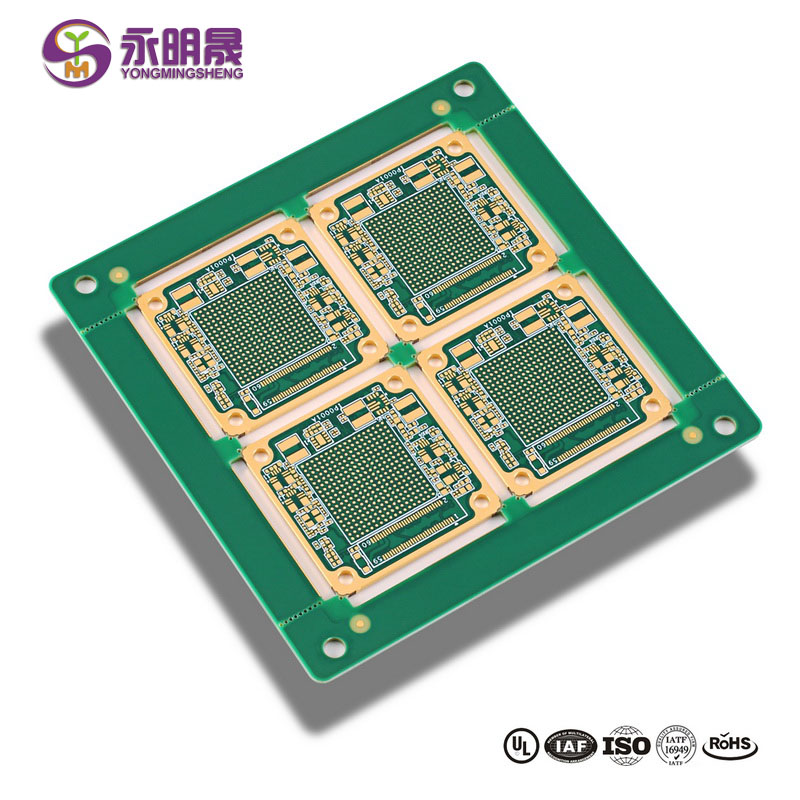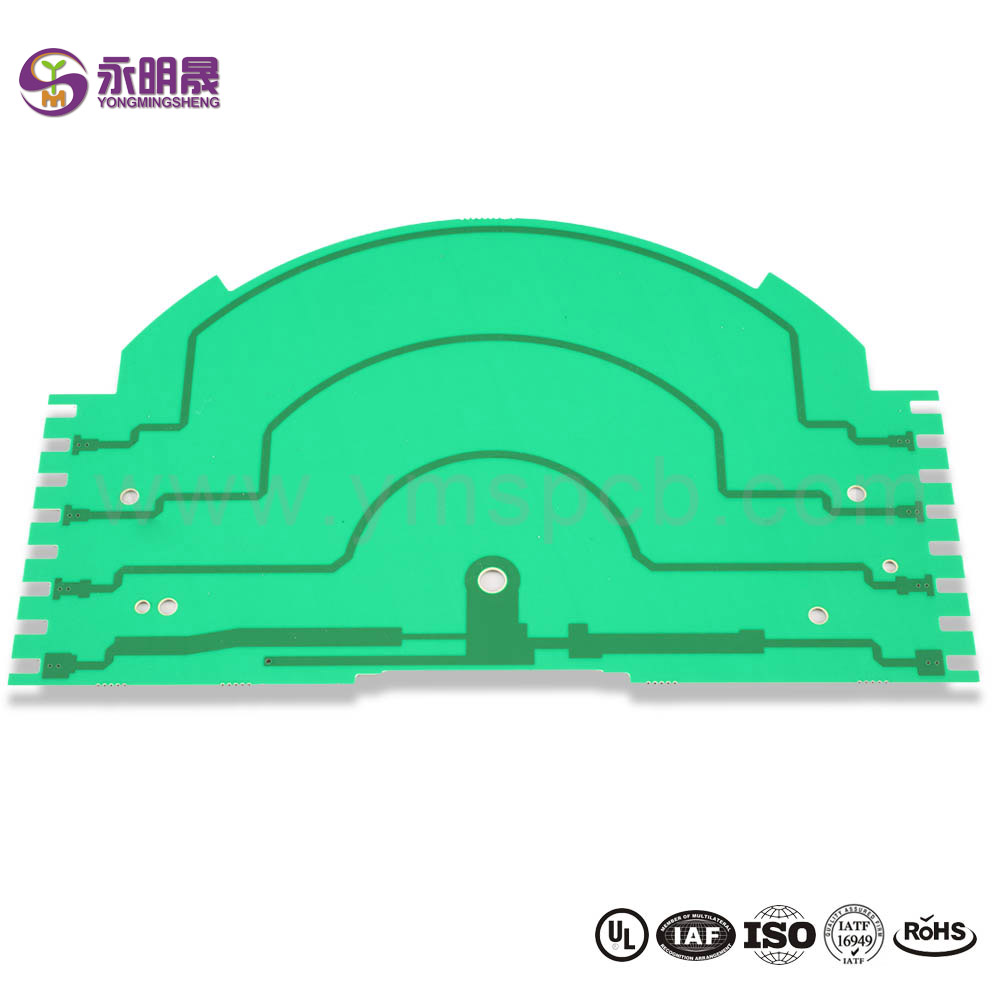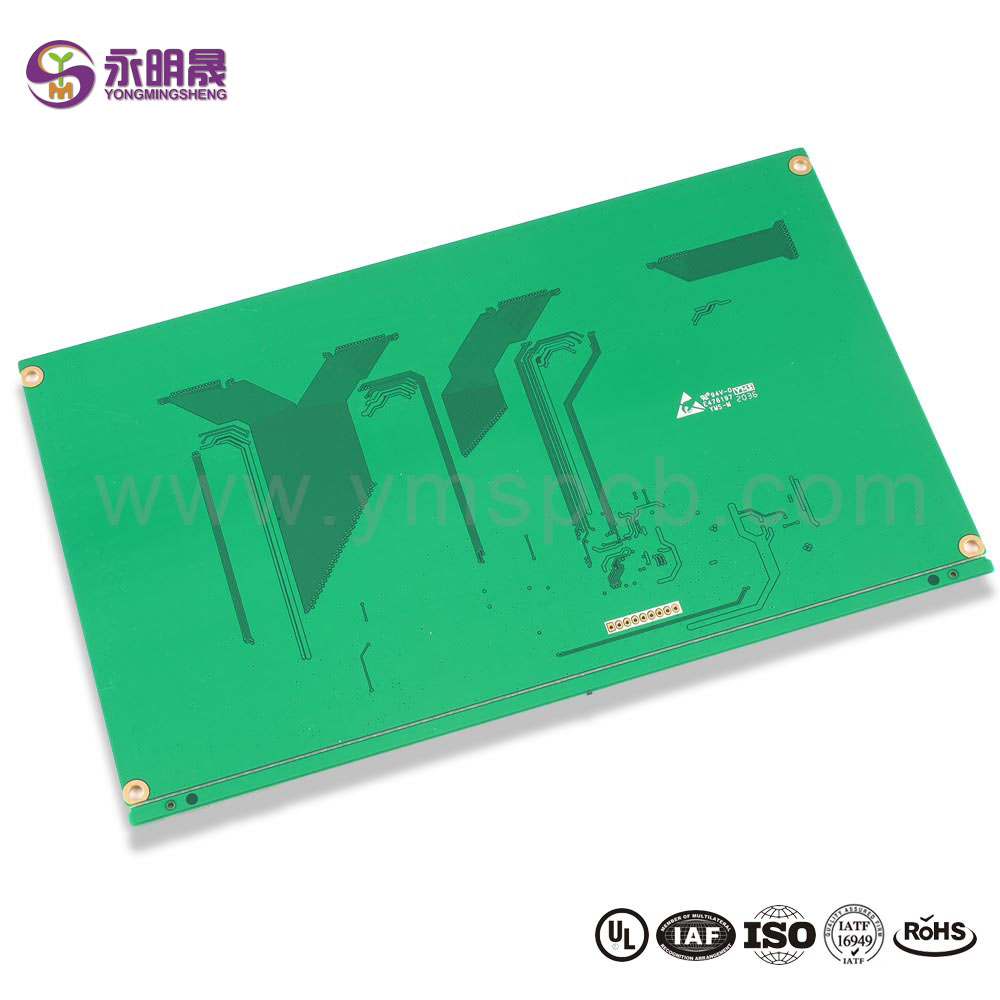High Frequency PCB
YMSPCB is a Skillful High-Frequency PCBManufacturer for You
Want superb High-Frequency PCBs but don't want to pay a high price for them? Then YMSPCB is the one to ask! We bring the finest of both worlds together. All of our circuit boards have fulfilled the AOl and E-testing procedures. Our facilities are very well-equipped.
We provide Quick-turn PCB for your High-Frequency PCB-we can have your order delivered within days!
As a leading high-Frequency PCB manufacturer in China, we have a significant amount of stock in a of high-frequency aminates as we have been producing PCBs with these materials for many years.
Some of the applications of these PCBs are WIFl models, RF antennae, IP infrastructure, radar systems, power amplifiers, diplexers/multiplexers, test and measurement, and many more.
As an IS0-certificated factory, YMSPCB strictly controls the quality of products and provides customers high-quality high-frequency PCBs, We also make sure to deliver of the product within the scheduled delivery time.YMSPCB assures the perfect product to our customers since we use our test machinery equipment.

Rogers RO4000 series has been in a leading position in the industry. This low-loss material is widely used in microwave and millimeter-wave frequency designs. Compared with traditional PTFE material, it is easier to be used in circuit manufacturing and has stable and consistent performance.
Custom High Frequency PCB
We put at your disposal our know-how for the most complex printed circuit designs with parameters or characteristics so special that they require the personal assistance of our team. We will provvide customized solutions that meet your needs simply by sending us your files by e-mail.



High Frequency PCB: The Ultimate FAQ Guide
High-Frequency PCB technology is one of the things that support the latest cutting-edge information equipment.
Therefore, an analog sensor is required. Not only that, but various high-speed digital circuits operate as expected. Therefore, the high-frequency sense is very important.
High frequency refers to "high frequency" electromagnetic waves or electrical signals.
Generally refers to high-frequency vibrations. For AC, hundreds of hertz or more, radio waves.Then, the frequency of several megahertz to several hundred megahertz. low frequency
High frequency in wireless engineering
ln radio engineering, high frequency means radio frequency and is used as a carrier wave for wireless communication.
Refers to electric signals or radio waves of the specified frequency."How many kilohertz and above are high frequencies?
it depends on the application. For example, an audio signal/electronic circuit, it is classified as low-frequency even if it is about several tens of kHz, which is about the same as the audio frequency band.
However, when used in wireless communication, the high frequency is 10kHz or more.
High-frequency PCBs,e.g. for wireless applications and data rates in the upper GHz range have special demands on the material used:
Adapted permittivity
Low attenuation for efficient signal transmission
Homogeneous construction with low tolerances in insulation thickness and dielectric constant
For many applications, it is sufficient to use FR4 material with an appropriate layer buildup.
In addition, we process high-frequency materials with improved dielectric properties.
These have a very low loss factor, a low dielectric constant, and are primarily temperature and frequency independent.
Additional favorable properties are high glass transition temperature, excellent thermal durability, and very low hydrophilic rate.
We use (among others) Rogers or PTFE materials (for example, Teflon from DuPont) for impedance controlled high-frequency circuit boards.
Sandwich buildups for material combinations are also possible.
One thing that really needs special attention is the denouement.
The fundamental concepts do not change when going from low to high frequencies. But implementation may require some improvement.
simply because low-frequency circuits will often be fully functional when decoupling is suboptimal, to put it mildly, rather than average quality.
In other words, low-frequency circuits are quite forgiving when it comes to decoupling techniques. And therefore. we may have developed design habits that are not really suitable for High-Frequency PCB.
Generally, High-Frequency PCB uses transmission lines of two types:
1. The microstrip2. The stripline
A microstrip is a transmission line in the TOP or BOTTOM layer and has only one plane as a reference,
A stripline is a transmission line in an inner layer of the PCB and it has a plane above and a plane below it as reference.
Therefore, using the theory of electrical networks in the distributed model of transmission line and with a reference plane we have to:
For High-Frequency PCB, usually above 100[Khz], the impedance is dominated by the line inductance, that is, the loop that the forward current makes with the return current. Thus, the higher the frequency. the return current will be concentrated further below the flowing current, where the loop and impedance are lower.
Transferring the designed printed circuit board on the printed circuit board is the most important step in the production of the printed circuit board and requires special attention.
There are many methods used in printing the printed circuit board. The designer chooses the desired method according to his needs and possibilities.
In this section, commonly used card-making methods will be explained to you. These methods.
Masking Method
The pencil method by drawing on the card
Positive-20(Photo-Resist) Method
Prepaid Card Technique
Screen Printing Method
PnP Method
High-frequency printed circuit boards are technologically unique models of dielectrics with operating frequencies from several MHz to tens of GHz.
Feature: they are used to equip high-frequency equipment even in cases where the use of traditional FR4 glass fabric materials is impossible.
The most important parameters of high-frequency printed circuit boards
Dielectric constant: 2.2-10.2 GHz
Signal delay characteristics.
Thickness criteria: 0.2-8 mm
Type of foil-clad material.
Dielectric loss tangents: 0.0009-0.004
Manufacturers use special low dielectric constant(<3 F) laminates to create high-frequency PCBs.They have a stable, wide frequency range and insignificant dielectric losses. Such materials are manufactured by Neltech, Taconic and Rogers, and others.
We list the most popular microwave laminates
Reinforced PTFE type - ULTRALAM 2000.
Ceramic - RT/droid 6000.
Thermostable, made on the basis of hydrocarbon ceramics - TMM
High-frequency PCBs are created on the basis of fluoroplastics in several ways: positive-combination and tenting method.
Note that the main significant difference between these methods is the presence of the stage of applying a metal resist to a copper surface (combined positive method). In turn, the production of high-frequency printed circuit boards by the tenting method greatly simplifies the production process, reducing time and money.
The main feature: when creating multi-layer high-frequency dielectrics, laminates are used only as outer layers, while the inner ones are filled with standard epoxy glass cloth materials.
When working on your first RF PCB design project, you are likely to run into new, previously unknown problems.
They will no longer be just about putting all the puzzle pieces together.
ow, you need to think about how exactly the signals behave when passing along the tracks, and how they affect all the details of the PCB. And at the end of the day, it all boils down to EMl problems.
As you dive deeper into the world of high-speed devices, you will gain new strategies and knowledge for dealing with electromagnetic interference while maintaining EMC or EMC. So use these TOP 10 tips to get started on your first project.
However, there is still much to be learned!
If you cannot find an answer to your question in our FAQ, you can always contact us and we will be with you shortly.
